What is oud, and why is it so talked about and shrouded with mystery. We know the famous Tom Ford Oud Wood, but do we know that it even has real agarwood or is it just synthetic. If you love this perfume, you’ll be interested in this comprehensive Oud essay.
So what is Oud?
Oud, also known as agarwood, emits a fragrant resinous wood highly valued for its unique and pleasant aroma. People obtain it from the Aquilaria tree when it becomes infected with a specific type of mould. The tree responds to the infection by producing a resin, which becomes impregnated with the mould and eventually hardens into a dark, aromatic wood known as agarwood.
Cultures in the Middle East, South Asia, and Southeast Asia have used agarwood for centuries. The perfume and fragrance industry highly seeks it, where it serves as a base note in many perfumes and colognes. People describe oud’s scent as rich, complex, woody, and earthy, with sweet, smoky, and sometimes animalic undertones.
People use agarwood in traditional medicine and to produce incense and other aromatic products. Due to its scarcity and the labor-intensive process of obtaining it, genuine oud can be quite expensive. There are also synthetic alternatives available, which attempt to replicate the aroma of natural oud at a lower cost. The demand for agarwood, both natural and synthetic, continues to be strong in the global fragrance industry.
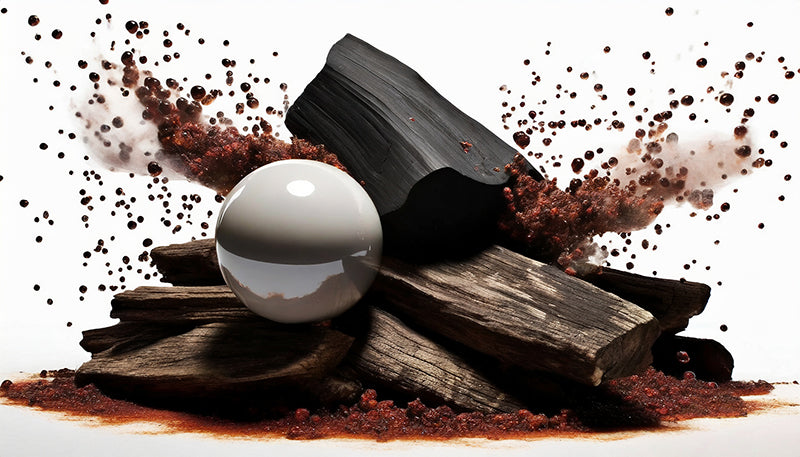
Why is oud is so expensive?
The high cost of agarwood can be attributed to several factors:
- Rarity: Aquilaria trees are relatively scarce, and not all of them produce oud. Agarwood is formed as a response to certain environmental stressors, such as fungal infection or injury to the tree. This makes the formation of oud a rare and unpredictable occurrence, which contributes to its high cost.
- Labor-Intensive Extraction: Obtaining agarwood resin is a labor-intensive and time-consuming process. It involves carefully cutting into the heartwood of the tree to access the resin, which is then collected and processed. Skilled labor is required to extract the resin without damaging the tree. The entire process can take several months to years to yield a sufficient amount of quality oud.
- High Quality Standards: Agarwood is graded based on its quality and aroma. Premium agarwood with a superior scent profile is more valuable, and the production of such high-quality oud is a meticulous and precise process that further adds to the cost.
- Aged Agarwood: The aging process of agarwood can significantly enhance its aroma, and aged oud is even more expensive due to the time required to mature and develop its complex fragrances.
- Sustainability and Regulation: Many Aquilaria species are protected under international and national regulations due to overharvesting and illegal logging. Sustainable harvesting practices and adherence to regulations may limit the availability of oud, further contributing to its high price.
- Growing Demand: The demand for agarwood has been growing globally, especially in the perfume industry and traditional medicine. This increased demand can also drive up prices.
- Cultural and Historical Significance: Agarwood has a long history of use in various cultures and is highly regarded for its symbolic and cultural importance. This can further drive up the price, as it is seen as a luxury item.
Due to these factors, genuine agarwood is indeed an expensive and sought-after commodity. Its unique and exotic fragrance has made it a valuable ingredient in perfumery and various traditional practices, further contributing to its high cost. Buyers should be cautious of counterfeit or synthetic alternatives, as genuine agarwood is a premium product with a price to match its rarity and quality.

Which countries produce OUD?
Agarwood is primarily produced in countries in Southeast Asia, South Asia, and parts of the Middle East. The production of agarwood is closely associated with the Aquilaria tree, also known as Agarwood tree, which is the primary source of this valuable resin. The following countries are some of the major agarwood-producing regions:
- Southeast Asia:
- Indonesia: Indonesia is one of the largest producers of agarwood, particularly in regions like Sumatra, Kalimantan (Borneo), and Papua. The Agarwood trees in these areas are known for producing high-quality oud.
- Malaysia: Malaysia is another significant producer of agarwood, with its Agarwood-rich forests in regions like Peninsular Malaysia and the Malaysian Borneo states.
- South Asia:
- India: India is known for its oud production, especially in the northeastern states of Assam, Manipur, and Nagaland, as well as parts of the Western Ghats. Indian oudh is highly regarded for its unique aroma.
- Bangladesh: Agarwood production is also notable in the Sylhet region of Bangladesh.
- Middle East:
- United Arab Emirates: In the Middle East, the UAE, particularly the Emirate of Abu Dhabi, has established itself as a hub for agarwood production and oud distillation.
- Saudi Arabia: Agarwood trees are found in parts of Saudi Arabia, contributing to the country’s oud production.
- Other Countries:
- Cambodia: Cambodia is known for its high-quality oudh, and it is a significant producer in Southeast Asia.
- Vietnam: Agarwood trees can be found in Vietnam, and the country has been increasingly involved in agarwood production.
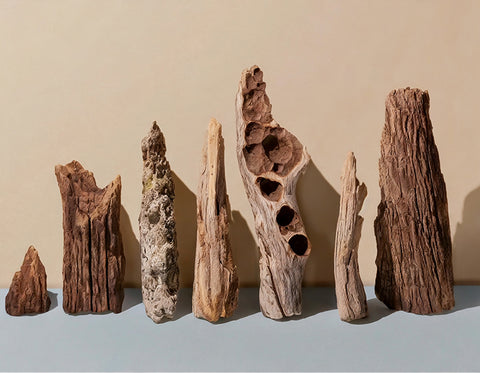
Why are most oud perfume synthetic?
Most agarwood perfumes are synthetic for several reasons:
- Cost: Natural agarwood, derived from agarwood trees, is one of the most expensive and rare perfume ingredients in the world. The production of genuine oud oil is labor-intensive and time-consuming, making it prohibitively expensive for many consumers. Synthetic alternatives are much more cost-effective, allowing perfumers to create agarwood-scented fragrances at a fraction of the cost.
- Sustainability concerns: The high demand for natural agarwood has led to the overharvesting and illegal logging of agarwood trees, endangering the species and contributing to deforestation. Synthetic oudh offers a more sustainable and ethical option, as it doesn’t rely on the depletion of these precious trees.
- Consistency and control: Synthetic oudh provides perfumers with greater control over the fragrance’s scent profile. Natural agarwood oil can vary significantly in aroma due to factors like the age of the agarwood tree and the location of the tree’s growth. Synthetic alternatives offer a more consistent and reliable scent, which is important for commercial perfumery.
- Consumer accessibility: By using synthetic oudh, perfume brands can make agwarwood-inspired scents more accessible to a wider range of consumers. It allows people to experience the exotic and captivating aroma of agarwood without the exorbitant price tag of genuine agarwood perfumes.
- Regulation and quality control: The perfume industry is not always strictly regulated, and it can be challenging to monitor and authenticate natural ingredients. Synthetic version provides a level of quality control and consistency that can be challenging to achieve with natural agawood.
How to spot the difference between synthetic oud and real agarwood scent?
Distinguishing between two scent can be challenging, but there are some factors you can consider to help you identify the difference:
- Synthetic notes: Synthetic agarwood often lacks the complexity and depth of genuine agarwood. It may come across as more one-dimensional or overly clean. Genuine oud has a rich, deep, and multifaceted aroma with earthy, woody, animalic, floral, cheese like, spicy and resinous notes.
- Longevity and sillage: Authentic agarwood fragrances tend to have excellent longevity and project well, with the scent lingering on your skin or clothing for an extended period. Synthetic oudh fragrances may not have the same staying power or intensity.
- Complexity and evolution: Genuine agarwood is known for its complexity and how it evolves on the skin over time. The scent can change and develop as it dries down. Synthetic oud fragrances may lack this complexity and may remain relatively unchanged throughout the wearing experience.

What is oud good for?
Apart from use in perfumery, Agarwood is a highly versatile ingredient. Here are uses of this ingredient that may surprise you.
Traditional Medicine: In traditional medicine systems, such as Ayurveda, traditional Chinese medicine, and various practices in Southeast Asia and the Middle East, oud (agarwood) is believed to have a wide range of therapeutic properties and is used to address various ailments. Here are some of the ailments or conditions that oud is believed to help treat in traditional medicine:
- Digestive Issues: In Ayurveda and some traditional Chinese medicine practices, agarwood is believed to have digestive properties and may be used to alleviate issues like indigestion, diarrhea, and nausea.
- Respiratory Problems: Agarwood is sometimes used to address respiratory conditions, such as asthma, bronchitis, and coughs. It is thought to have respiratory-relaxing properties.
- Mental Health: In some cultures, agarwood is associated with calming and soothing effects on the mind. It may be used to reduce stress, anxiety, and promote relaxation.
- Pain Relief: Agarwood is sometimes used as a natural analgesic in traditional medicine for pain relief, including headaches and muscle aches.
- Cardiovascular Health: Some traditional systems suggest that agarwood may have a positive impact on cardiovascular health, potentially regulating blood pressure and improving overall heart health.
- Aromatherapy: Agarwood essential oil is used in aromatherapy for its potential to uplift the mood, reduce stress, and create a sense of tranquility.
- Anti-Inflammatory: Aagrwood is believed to have anti-inflammatory properties and may be used to address conditions associated with inflammation.
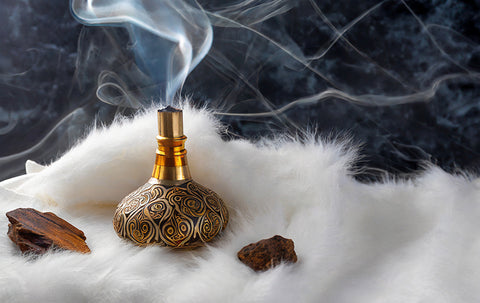
Incense: Agarwood chips, powder, or essential oil are used to create high-quality incense for religious and ceremonial purposes. The fragrant smoke produced is believed to have spiritual and purifying qualities.
Woodcraft: Agarwood is prized for its unique and beautiful grain patterns, which make it a valuable material for high-end woodworking and crafting. It is used to create ornate furniture, decorative carvings, and other fine woodwork products
Amulets and Talismans: In some cultures, pieces of agarwood are carved into amulets or talismans believed to provide protection or bring good luck.
Flavoring: In some Middle Eastern and South Asian cuisines, particularly in the Arabian Gulf region, you may find dishes that incorporate agarwood as a flavoring, albeit in very small quantities. Agarwood is often used in the form of agarwood oil or agarwood-infused water. It’s essential to note that the use of agarwood in food is considered a luxury and is typically reserved for special occasions and extravagant dishes.
Agarwood oil is used sparingly and carefully because of its strong and distinctive aroma. It can impart a rich and complex flavor to dishes, often described as woody, smoky, and resinous. Some dishes where oud may be used as a flavoring include:
- Rice Dishes: In some regions, particularly in the Arabian Gulf, oud may be added to rice dishes, such as biryani, to enhance their fragrance and flavor.
- Sweets and Desserts: Agarwood can be incorporated into desserts, such as baklava or various types of confections, to add a unique aromatic element.
- Beverages: Agarwood-infused water may be used to flavor drinks, including hot teas and cold beverages.
- Perfumed Meat Dishes: In some traditional dishes, especially in Persian cuisine, small amounts of agarwood may be used to add an aromatic element to meat and poultry preparations.
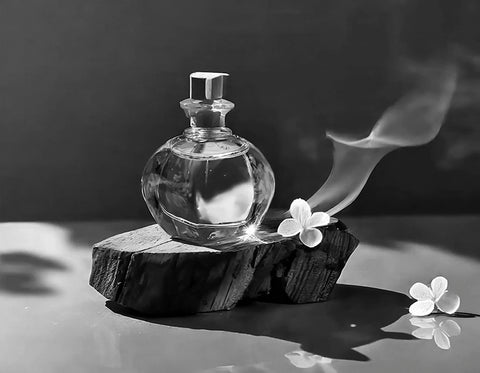
How does OUD enhance a perfume?
As the price of agarwood is so high, fortunately it is also incredibly intense and could used in tiny quantities to enhance a perfume. Here are the reasons why artiscan perfume makers love using agarwood:
- Rich and Complex Base Note: Agarwood is often used as a base note in perfumes, which means it provides a long-lasting and stable foundation for the scent. Its rich and complex aroma adds depth and sophistication to the fragrance, making it more interesting and multi-dimensional.
- Longevity: Agarwood has excellent fixative properties, meaning it helps the other fragrance ingredients in the perfume last longer on the skin. This can significantly increase the longevity of the scent, making it stay on the skin for hours or even days.
- Aromatic Depth: Agarwood’s unique scent profile includes a combination of woody, sweet, balsamic, and sometimes smoky or animalic notes. This complexity can complement and enhance the other fragrance components, adding a layer of depth and character to the perfume.
- Uniqueness: Agarwood is a rare and highly sought-after ingredient, and its presence in a perfume can make it stand out from other fragrances. Agarwood-based perfumes often have a luxurious and exotic appeal, making them highly desirable to those seeking unique and exclusive scents.
- Blending Capabilities: Agarwood can harmonize and blend with a wide range of other fragrance ingredients, both natural and synthetic. Perfumers can use it to create various scent profiles, from oriental and woody to floral and fruity, depending on the specific oud variety and the accompanying notes.
Try the ultimate all natural agarwood perfume
If you have a passion for Oud Wood and enjoy the unique and captivating scent it offers, you should consider trying Oud Octavo from Prosody London for several compelling reasons:
- Natural Ingredients: Prosody London is renowned for using all-natural ingredients in their fragrances. Oud Octavo is no exception, crafted with the finest natural components. This ensures an authentic and high-quality oud experience.
- Authentic Oud Scent: Oud Octavo is designed to capture the true essence of Oud wood. Its rich, woody, and complex aroma is likely to resonate with Oud enthusiasts seeking an authentic and deep fragrance.
- Luxurious Experience: Oud Octavo is known for its luxurious and exotic scent profile. It can make you feel sophisticated and elegant when wearing it.
- Vegan and Organic: Prosody London’s commitment to producing vegan and organic perfumes means you can enjoy the fragrance guilt-free, knowing it aligns with eco-friendly and ethical values.
- Unique Blend: Oud Octavo is offers a unique blend of all notes and facets that agarwood exude, unlike synthetic oud, which can be quite plastic smelling, this oud perfume is easy to wear and very long lasting natural perfume.
- Sustainably sourced: Oud Octavo only used sustainably sourced oud at the finest grade from Vietnam and Malaysia.
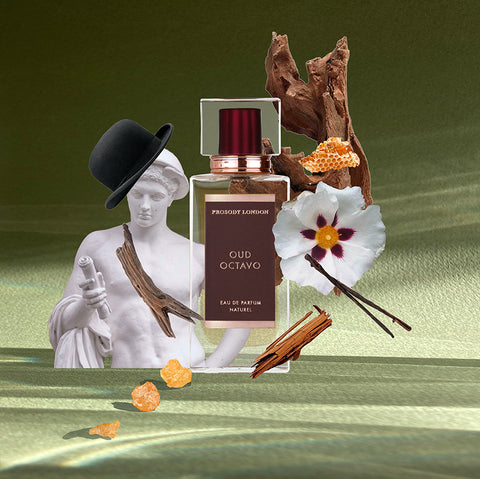
If you’re a fan of Agarwood and appreciate high-quality, natural fragrances, Oud Octavo from Prosody London might be the perfect choice for you. Other perfume that uses Agarwood as ingredient are Mocha Muscari and Ocean commotion.



